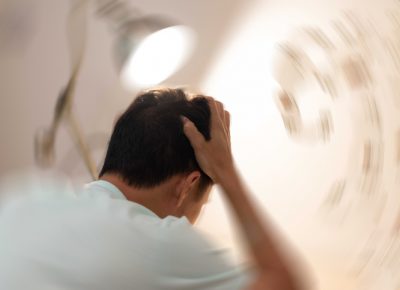Concussion Awareness

When you hear the term ‘concussion,’ what do you think of? With talk of head injuries dominating the world of professional sports, especially in football, you may imagine a cringe-worthy collision between powerful opposing forces. Recent research has exposed the potentially detrimental effects of head injuries, even with the supposedly protective headgear worn by football players.
Considering the fact that professional athletes wearing specifically designed headgear still suffer from head injuries, it is particularly important to assess the risks that young athletes face. Any athlete can suffer from a concussion, and because we may not associate concussions with sports such as baseball or cheerleading, we could miss the warning signs of these devastating head injuries.
The people on the front lines of youth, high school, or collegiate sports—coaches, trainers, parents, and school officials—should be extra vigilant. You’re usually the first one to evaluate an athlete, regardless of age, who gets hit in the head during practice or takes a hard fall during a game. Therefore, it is important to remember a few universal key points in the event of a head injury.
- Know the signs: A concussion is an injury to the brain caused by trauma directly to the head or body that results in the brain being shaken or jolted inside the skull. The initial diagnosis of a concussion is made by the presence of signs and symptoms. There are over twenty signs and symptoms, but some of the most common ones that initially present are headache, dizziness, fogginess and nausea. If any of these symptoms are present, the athlete should be immediately removed from the game or practice even if the athlete claims to feel okay. It is common for an athlete’s drive to continue that may overpower what is really best, which is playing it safe and sitting out.
- What’s next? Concussions can cause serious difficulties and limitations for student athletes. They may have difficulty focusing in class, working on computers for extended periods of time, difficulty taking notes from the board, and even reading a textbook. Steps should be taken to remove them from aggravating tasks until evaluation by their pediatrician or family doctor, or a concussion specialist. Once evaluated, proper accommodations such as reduced workloads and extra time to complete assignments can be arranged in order for the athlete to recover fully and properly.
- Additional rules of thumb: Accommodations don’t end once the school day is over. The same difficulties that a student has in school also apply to out-of-school activities. Things such as watching TV, playing video games, and extended time on a cell phone can trigger severe symptoms and harm the healing process. Parents must supervise their children and remove aggravating activities that may slow the healing process, specifically technology use as well as vigorous physical activity. Close follow-ups with your doctor and communication between parents, coaches and school officials will ensure that the correct measures are taken for your child to heal properly.
Concussions are a complex injury to diagnose and treat and should always be taken seriously. Fortunately, due to the increased scrutiny in sports and amplified research, our understanding continues to grow. Parents, coaches, trainers, school nurses, etc. must be aware of the basic signs of concussions and how to properly start the evaluation and treatment process.
Jersey Shore Sports Medicine specializes in treating sports-related concussions in athletes ages eleven and up. If you have any questions, or feel you have an athlete that needs to be evaluated, please contact us at 609-904-2565. You can also follow us on Facebook and Twitter to continue the conversation about concussion awareness.
